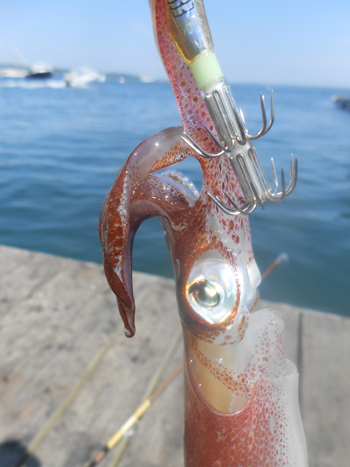Council Receives Atlantic Herring Amendment 8 Update

GARFO graphic
Press Release During the first day of its Sept. 20-22 meeting in Danvers, Massachusetts, the New England Fishery Management Council received a progress report on Amendment 8 to the Atlantic Herring Fishery Management Plan. The amendment contains two key components that involve:
• Development of a long-term acceptable biological catch (ABC) control rule for the Atlantic herring
fishery; and
• Measures to address potential localized depletion of Atlantic herring. MSE incorporates more public input and technical analyses upfront before alternatives are selected. The Council held its first MSE public workshop in mid-May to begin gathering recommendations on a potential range of objectives for an ABC control rule, as well as feedback on how the objectives should be evaluated. A second workshop likely will be held Dec. 7-8 in Massachusetts.
“A long-term control rule is needed to provide guidance to the Council’s Scientific and Statistical Committee regarding how to specify an annual ABC to account for scientific uncertainty, stock status, and the Council’s risk tolerance to maintain a sustainable Atlantic herring stock that includes consideration of herring as a forage species.”– Draft Amendment 8
The ABC control rule may: (1) explicitly account for herring’s role in the ecosystem as a forage species; and (2) address the biological and ecological requirements of the resource itself. It is being developed through a Management Strategy Evaluation (MSE) approach.
The Council also received a briefing on the Atlantic Herring Committee’s late-August discussion about potential alternatives to address localized depletion. Most of the committee’s early proposals focus on variations of “inshore buffer zones” where midwater trawl gear – or in one case all herring gear types –would be restricted or prohibited year-round or seasonally. The Council made two motions to modify the Committee’s initial range of buffer zones, which now span from a discrete six-mile closure in an area off the backside of Cape Cod, up to a 50-mile buffer zone throughout the range of the fishery south of Herring Management Area 1A, covering the inshore portions of Areas 1B, 2, and 3 (see map). The committee will meet again on Oct. 20 and Nov. 9 to further debate and reevaluate the alternatives.
To recap how this all began:
• The Council went through a public scoping process forAmendment 8 from Feb. 26 to April 30, 2015 to consider long-term harvest strategies for herring through an ABCcontrol rule.
• After reviewing the scoping comments, the Council in June 2015 expanded the reach of Amendment 8 to “include consideration of the spatial and temporal availability of Atlantic herring” in order to address public concern about localized depletion.
• The Council is aiming to approve the range of alternatives on localized depletion and ABC control rule measures in January. Framework Adjustment 5: The Council is continuing to work on potential modifications to the haddock accountability measures (AMs) for Atlantic herring vessels fishing with midwater trawl gear in the Georges Bank AM area (gray section in map above). AMs come into play when the herring fishery’s haddock catch cap is reached. Framework 5 will be discussed further in November.
Framework Adjustment 5: The Council is continuing to work on potential modifications to the haddock accountability measures (AMs) for Atlantic herring vessels fishing with midwater trawl gear in the Georges Bank AM area (gray section in map above). AMs come into play when the herring fishery’s haddock catch cap is reached. Framework 5 will be discussed further in November.
